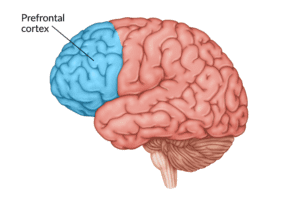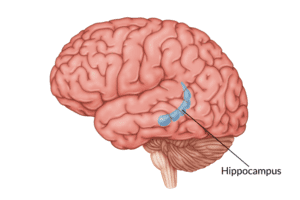
It is Friday afternoon. You are leading a project that needs to get the bathroom tile installed by the end of the weekend because the facility is opening on Monday. The construction team brought all the pallets of tile near the bathroom so they could get started right away the next morning. The next morning, when the boxes of tile are opened it is discovered that the boxes are filled with the wrong tile. It had taken over a month to get this tile.
What do you do?
This type of scenario plays out every day on construction projects. As you feel the pressure jump in your heart, many people “blow up” at everyone involved – blaming, chastising, scolding, punishing anyone involved. As the leader who just blew up, you feel out of control and overwhelmed. Surely your reaction did not help to solve the problem. You have damaged the relationships with everyone on the team. In fact, you probably created a much bigger problem, and no one is focused on finding a solution.
To control your reaction in a crisis, it is important to understand what is going on within your brain when you react.

The amygdala in your brain is always on alert for danger. Its role is to protect you from threats. It triggers a fight, flight, freeze, or faint response when it thinks there is a threat.
You also have your frontal cortex in your brain that is where reason and logic comes from and allows for good decision making. But to get to your frontal cortex you must first go through your amygdala.

So, the faster you can calm your amygdala the faster you can get to your frontal cortex, and you can start focusing on resolving the issue.
Here are three brain hacks to help you calm and control your amygdala so you can access your frontal cortex more quickly.
Brain Hack #1: Breathing
The quickest way to change your brain is by breathing. When you are “reacting” what happens to your breathing? It gets rapid and becomes shallow. Your breathing pattern does impact your nervous system. So, to shortcut the perceived fear, slow down your breathing, and breathe deeply.
There is one breathing technique that has many clinical trials and has proven to work well. Take a deep breath through your nose. Then without exhaling take another breath. Now, through your mouth you exhale and allow some sound to come out. When done right, you will feel a tingling down your spine and down your legs and a sense of relaxation. Repeat until you feel calm enough to be able to access your reason and logic (your frontal cortex).
Daily practice of this breathing technique will make it much faster for you to gain access to your frontal cortex when your amygdala is perceiving a threat.
Brain Hack #2: Meditation
Meditation has been shown to reduce the size of the amygdala and so reduces the resistance to accessing your frontal cortex. Daily meditation will not only shrink the size of your amygdala, but it will change many aspects of your brain including thickening your hippocampus. The hippocampus is the area of the brain that allows us to learn and remember.

Meditation not only calms the amygdala, but it also has many added benefits. One of which is growing your hippocampus helps you learn so you are better equipped to resolve the problem.
Mediation has many forms and can be done easily wherever you are in 10 minutes each day. Yoga Nidra is guided meditation. This is a great place to start because it helps you to silence your inner voice as you follow the guide. There are many yoga applications today that you can use. The main thing is to make it a daily practice. I start everyday with a walking meditation. It releases all sorts of ideas and information from my subconscious. It is amazing. I highly recommend it to everyone in our industry.
Brain Hack #3: Visualization
Visualization activates your motor cortex located in your frontal lobe. Visualizing what you want to have happen, works to activate the same neural pathways in your brain as if you are living through the experience. When you visualize achieving what you want, you activate mirror neurons in your brain as if you are experiencing this event successfully. This enhances your capacity for empathy and understanding. This also boosts your confidence in achieving what you want, and this allows you to create ideas that would otherwise have been blocked.
There are many visualization techniques and you can use a guided meditation process that includes your desired outcome or achievement. Just make sure that you visualize and do self-talk in the present tense. Even more powerful is to then act as if it has already happened. This allows other senses to be involved. You behave, feel, expect what you are visualizing to occur.
Studies have shown that visualization increases neuroplasticity. Some people do struggle to “see” with their brain because their brain is used to seeing images through their eyes. So if you are highly visual this can take practice. Try shutting your eyes and being in a quiet, dark space to help lower your visual messages to your brain.
Back to our tile problem…
What would you do if you were faced with this problem now that you know these three brain hacks? True, they all take practice, and with practice you will have access to much more of your brain power to listen and learn from your team, understand the problem, and develop a creative solution. You will be MUCH more likely to meet the Monday morning deadline for the opening, than if you switch into “fight or flight” mode and take your team there with you.
Check out more brain hacks here.
Sue

Sue Dyer, MBA, MIPI is a Master Partnering Facilitator & Founder for OrgMetrics LLC, WSJ bestselling author on Trusted Leadership for construction leaders, Founder of the International Partnering Institute, and President of sudyco® LLC. You can contact Sue at suedyer@orgmet.com or 510 504-5877.

